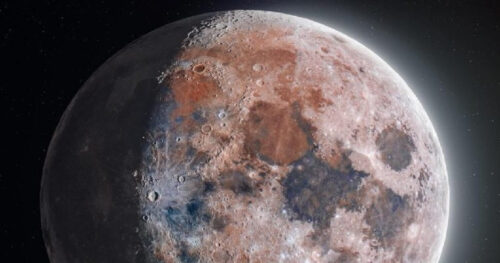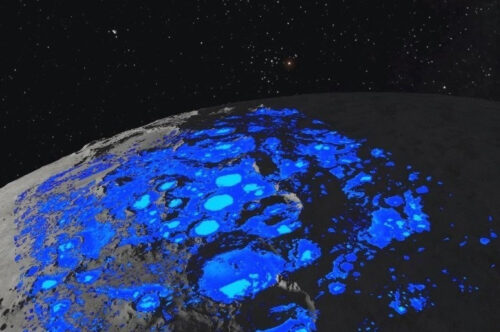
In a groundbreaking discovery, scientists have revealed that the moon may hold a staggering amount of water, challenging our previous understanding of Earth’s celestial neighbor.
While lacking visible bodies of liquid water, the moon has long been suspected to contain significant water deposits, particularly in its ice patches located within the permanently shadowed regions.
Chinese scientists have recently examined lunar soil samples, providing conclusive evidence that the moon harbors billions of tonnes of water locked within tiny glass beads, potentially formed during asteroid impacts.
This research not only answers long-standing questions about lunar water storage but also sheds light on the lunar water cycle, furthering our understanding of this intriguing celestial body.
For decades, scientists have sought to comprehend how water is stored on the moon, particularly outside the polar regions where ice deposits are expected to be more abundant.
This recent study reveals that a hydrated layer reservoir exists beneath the lunar surface, crucial for sustaining a water cycle on the moon.
Previous investigations into the water inventory of lunar soils failed to locate this reservoir, but the discovery of water-rich glass beads formed during asteroid impacts has filled some of the gaps in our knowledge.
Water is a precious resource, especially in the exploration of planetary surfaces. Understanding how water is produced, stored, and replenished near the lunar surface is crucial for future lunar missions.
The presence of water on the moon offers immense potential for sustaining human outposts and enabling sustainable exploration.

Scientists envision extracting water from these glass beads, potentially through a heating process that releases vapor, allowing condensation and the formation of liquid water.
More than 50 years after the last moon landing, space agencies like NASA and the European Space Agency are gearing up for a return to the moon.
The Artemis mission aims to send the first woman and person of color to the lunar surface, while the European Space Agency plans to establish a moon village. Both missions recognize the significance of lunar resources in sustaining off-world bases.
Previous missions, such as NASA’s Clementine orbiter, have provided indications of frozen water in deep craters near the moon’s poles, further fueling interest in lunar water exploration.

The recent revelation of substantial water deposits on the moon is a game-changer in our understanding of our celestial companion.
The presence of water in the form of glass beads offers tremendous potential for future lunar missions, providing a crucial resource for sustained exploration and establishing human outposts.
This groundbreaking discovery propels us closer to unlocking the mysteries of lunar water storage and the mechanisms driving the lunar water cycle.
As space agencies prepare for an imminent return to the moon, the significance of lunar resources, particularly water, cannot be overstated.

With each new breakthrough, we inch closer to realizing the full potential of the moon as a stepping stone for human exploration and deepening our knowledge of the universe.
